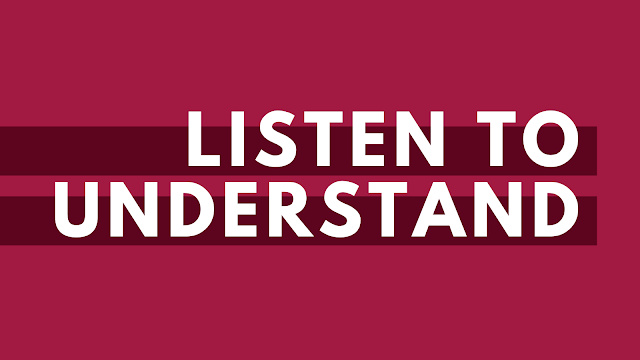As analytics professionals, we want to provide solutions to our clients' data problems. Too often, though, we jump to conclusions or solve a problem that wasn't the real issue. Other times we don't want to acknowledge the fact that we may not be able to provide the answer. Worse, maybe we're part of the problem! It can be a tough pill to swallow, but the ability to self-reflect and listen closely to the needs of others can have a profound impact on an organization. In previous posts I write about how to assess analytical maturity and then develop a plan to address a strategic vision. These initiatives only work if you first listen to your constituents.
Ask, then Listen
Over the course of the last 6 years I've gone from being a contractor that specializes in Tableau to the manager who owns the Tableau platform in addition to Alteryx, SSAS, SSRS, and data science. My opinions have also shifted over that time as my view and experiences have expanded. For example, I initially thought self-service analytics was the answer. (Tableau Desktop and training for everyone!) I've recently come to realize not everyone wants that. Some people just want to reach out to an analytics team and have them produce the dashboard. Mind. Blown.
You can hear me speak more about finding these types of insights at this LinkedIn event.
This type of realization has occurred in other aspects of my job as well as in the groups I run. As the world went virtual last year, so too did the Milwaukee Tableau User Group. We continued to organize quarterly meetings in 2020, but people were getting Zoom fatigue. Our 3-hour long meetings were not going to work going forward. So we cut the meeting length to something more manageable and worked with other Wisconsin groups to provide monthly meetings instead. It's been working out fantastic!
Reflect
Upon further reflection, I realized the thing I missed most about in-person user groups were the networking and casual interaction. Other people must have been feeling the same way I was! It's difficult to get that personal interaction from a webinar-style meeting where only certain people are allowed to speak and you have content to cover. And that's how the idea of a data book club was born. Anyone could sign up, purchase their own book, read the assigned chapters, and join a video call to discuss. I thought maybe we would get 25 people to sign up, but we had over 100 people! Utilizing the breakout rooms functionality in Zoom, the individuals who joined the call were randomly split up into smaller groups to discuss the book. Many connections were made and we were able to collaborate and interact much like we would have if we were in person.
Get Feedback
After the conclusion of the book I created a survey using Google Forms to get feedback on how it went, ways it could be better, and if there was interest in another round. Feedback is a critical component to improvement even though it can be difficult to hear, especially if you don't agree. I've had to come to terms with the fact that not everyone thinks like I do or has the same experiences. And while I may have my own opinions, if people don't come to my event or use my dashboard, it doesn't matter.
It should not noted that incorporating feedback needs to be steady. After the first round of the book club I'm making a few minor changes such as an asynchronous chat feature and a slight change in the meeting time. You don't have to implement every suggestion (in fact you probably shouldn't), but if multiple people are saying the same thing, then you should consider it.





